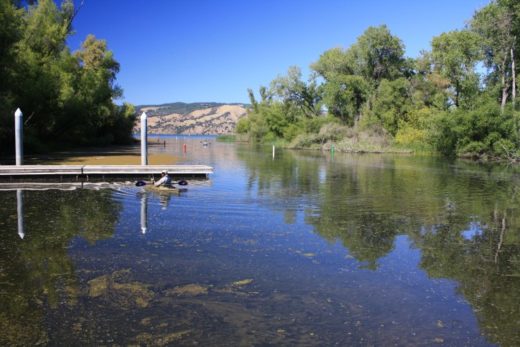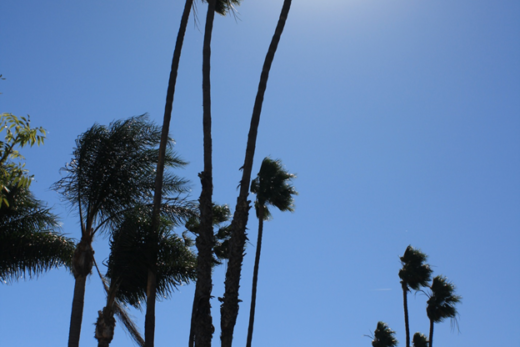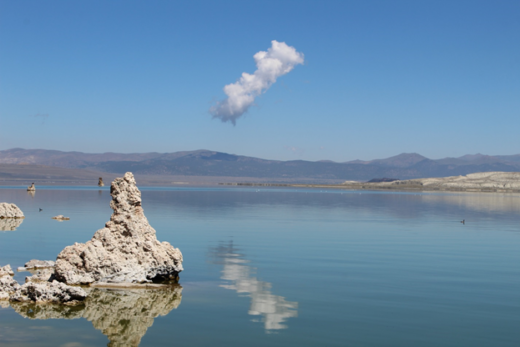In the video below I lightheartedly make references to both New York and Utah.
Please allow me to explain.
For those of you not in the know, the expression “New York Minute,” refers to something done very fast. We don’t usually think of erosional processes as happening with haste. Rather it is another expression, “geologic time,” which is often used to highlight the oceans of time it takes constructive and destructive processes to shape Earth’s surface. In this realm of eons and eras, things happen in agonizingly slow fashion. You can safely look away for a moment, grab a beverage, and not worry about missing any of the action.
That’s right folks, don’t touch that dial …
But when it comes to erosional landforms, badlands are one of the speed demons of geomorphology. These loosely compacted formations are often composed of soft, unconsolidated deposits, conglomerates, or friable sedimentary rocks. But would you believe that landscapes such as this can potentially be shaped by the elements so quickly, that you might actually witness the process in real time? As it turns out, that rapidity of change is an important factor in badlands formation. More on that in another minute — see what I did there?

Badlands topography is distinguished by its lack of vegetation. These grounds are riddled with narrow gullies and ravines that more often than not, have steep and plunging gradients. Such slopes make it hard for plants to find a foothold. Speaking of feet, overland travel through such areas is often arduous. Though a short hike, my traipsing around in this area collecting pictures and video for this story proved difficult. It has been postulated that this fact is the primary reason why these features are so named.
Don’t shuffle off to Buffalo, or Manhattan, to find them …
Badlands as a feature of the landscape are quite uncommon in New York or elsewhere east of the Mississippi. I should know. I grew up in Connecticut. There is nothing remotely resembling these landforms anywhere to be found on the East Coast. Humid environments, like those found in the Empire State, lend themselves to vegetation cover. Vegetation helps anchor the soil, regolith, and other loosely consolidated sediments. There is no doubt that erosion still happens in the “wet” East. It just tends to happen more slowly and usually in less dramatic fashion with less striking results.

When badlands do occur in such areas it is usually prompted by disturbances (fires, floods, avalanches etc.) that temporarily alter the landscape. Left to their own devices, these lands usually revegetate themselves quickly enough so that they don’t grow into the formations we see in Quatal Canyon. Indeed, even in this area, the badland features comprise a relatively small area of only a few hundred acres in extent around the steepest escarpments and terrain.
Human modifications to the land are another way such features can form. Again, disturbance is the key. Anthropogenic activity has the potential to disturb the land as much or more than some natural processes. Deforestation, development, slash & burn agriculture, acid rain, and climate change are but some of the human impacts that can help strip the natural protective layer of vegetation from the surface and exacerbate erosional activity.
The key difference between the east and west is the drop in average annual precipitation once you cross the 100th meridian. West of that line, the lack of water and/or unequal distribution thereof actually becomes a major factor in the fluvial processes that shape the land. It sounds like a paradox and it is to some degree. But the lower the annual precipitation totals are in any given area, the higher the variability of precipitation will be. What this means in practical terms is a cycle of drought and deluge for areas like Quatal Canyon. Large parts of California fall into this category.
So why are they here, precisely?
Quatal Canyon is a major drainage/tributary of the Santa Maria Watershed. The intermittent streams that currently course though this semi-arid region rise on the WSW slopes of nearby Mt. Pinos. According to USGS survey maps, much of the surrounding area and valleys are underlain with Quaternary, sedimentary rocks. Sedimentary rocks, while not as crumbly as unconsolidated sediments, still weather and erode faster than most igneous or metamorphic rock. At some point in the past, a sizable amount of clay, silt, and sand was transported and deposited by fluvial processes in the streams or perhaps in a shallow lake that once existed here. These formations were then buried by more resistant layers and covered with vegetation before becoming exposed once more to the elements. That exposure may have been from a disturbance, natural erosional processes, or tectonic activity or some combination thereof.

Okay, maybe not N.Y. but what does this have to do with Utah?
The coloration of these rocks (orange, white and reddish hues) and the minerals they contain (iron oxides, mostly), coupled with the spectacular shapes they take on (spires, hoodoos and pillars) are what make this area reminiscent of the fantastic lands of the Beehive State. Obviously this smallish formation of a few hundred acres in Quatal Canyon can’t compare to the sweeping grandeur that is to be found in Bryce Canyon National Park. But in the hidden recesses and folds of this formation, you can find places that look strikingly similar. The processes are more or less the same.

Owing to the elevation (~ 4,000’/1219m) and the inland location of Quatal Canyon, much of the vegetation that surrounds the badlands is also very similar to that of the Great Basin Province: pinon and juniper woodlands. With some carefully chosen angles, I’ve fooled even knowledgeable people about the exact location of these features. Then again, the Golden State is well-known as a stand-in for many other exotic locales across the globe. Hollywood has made an industry of that fact.
More than meets the eye …
Badlands, as it turns out, are also a good place to teach about drainage patterns. The lack of vegetated cover combined with soft sediments means that rainfall doesn’t flow overland very long — and you can easily see its effects. Here, surface runoff quickly starts carving small rills and gullies in the loose ground. Also, with no vegetation to help shield from and soak up precipitation events, the ephemeral streams that form in these lands can more quickly become erosional torrents. These patterns are easily discernible here even to the untrained eye.

In turn, the geology and geomorphology are laid bare in such places. It is not hard to identify such things as tilting, folding, or warping in the clearly visible stratified layers. Teaching such subjects in my native Connecticut would be more difficult by virtue of the fact that — barring a few rock outcrops here and there — trees and grass cover everything of interest. That is obviously not so in the more arid regions of the west. The dearth of ground cover means the minerals and mechanisms that make up landforms are more easily exposed to the eye and the rock hammer.

There are much more extensive areas of badlands to be found in California. Perhaps the largest cluster is a discontinuous assemblage in and around Anza-Borrego State Park. Those badlands are measured in square miles, not acres. Portions of the Mecca Hills near the north end of the Salton Sea also exhibit some badlands topography. Probably the most sublime examples can be found in the Golden State can be experienced at Zabriskie Point in Death Valley National Park.


More than anything, badlands are just really cool to look at!
Though I have lived in the Golden State now for some 20 years, I still can gaze out upon the scenery here with “Eastern Eyes.” To my gaze, badlands are one of the most exotic and awe inspiring landforms I can think of. And in knowing a thing or two about geology and geomorphology, they speak to me of a changing Earth, the passage of time, and beauty that is the natural world.
There is nothing bad about them at all.




